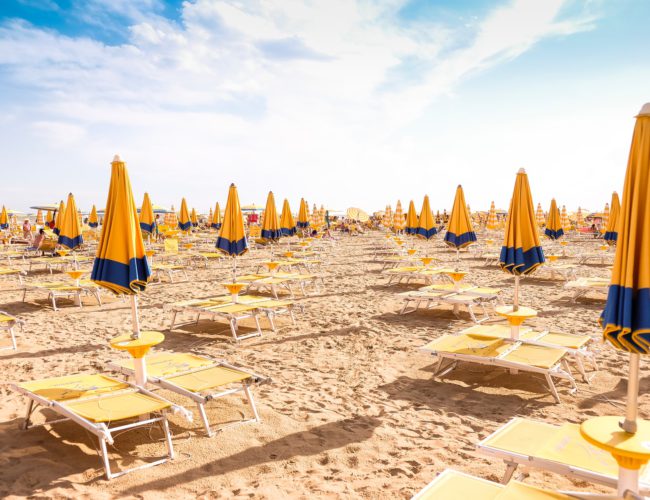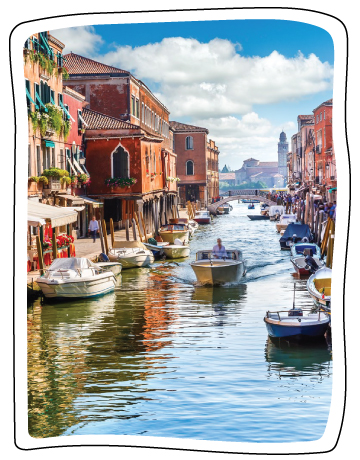Friendly disclaimer! We want to be as accurate as possible, but given these challenging times, we urge you to recheck that the venues are open when you decide to visit.
Venice is a city steeped in history and spiked with imagination. Like many of its grandiloquent buildings that showcase its architectural beauty, this city represents the quintessential spirit of Italy. Venice’s marble architecture, narrow waterways, colorful houses, and the beautiful lagoon on which it is situated are just the tip of the iceberg. There are plenty of opportunities to feed your wanderlust especially in the form of short trips to several close-by destinations. Here are some day excursions that will make your trip to Venice truly worthwhile.
Verona
Verona has been immortalised by Shakespeare’s Romeo and Juliet and made this spot the romantic ideal for generations of star-crossed lovers and flocking tourists. Besides the instagrammable spots and the very popular ‘Casa di Giulietta’ with its much-photographed balcony (that has acquired somewhat of a cult status), Verona’s rich historical architecture dates back to the Roman era, the medieval times, and of course, the Renaissance.
There’s much more to this charming city than its story of star-crossed lovers, though the Roman amphitheater of Verona Arena continues to draw people even today with its line-up of opera performances that host reputed artists. To witness the splendour of Renaissance architecture, the beautiful Giardini Giusti is a must-visit garden with elaborate fountains and gargoyles that herald the glory of Venetian Renaissance, in a single glance.
Once done exploring this charming place, indulge in some local delicacies such as in the delightful Ristorante La Fontanina, and for coffee and pastries in the Caffe Turbino.
Location: Verona, VR, Italy
Getting there: Take the regionale veloce train from Stazione Santa Lucia to Verona Porta Nuova.
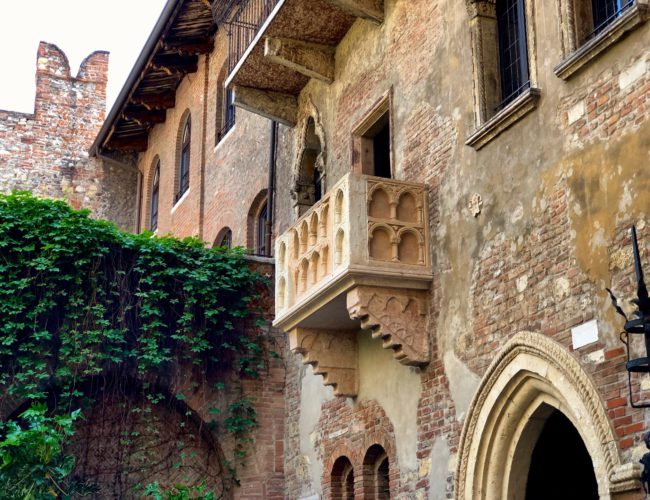
Venice’s own islands
Venice’s islands are always a welcome getaway from Venice, diverse as they are in their offerings and sights. To experience life in Murano, Torcello, and Burano, it is better to plan a couple of days’ trip to these islands, to unravel their myriad faces.
Murano is famous for its tradition of crafting glass with its 4000-year-old history of glass-making. You will find visitors constantly thronging to take back delicate glass souvenirs. The traditional glass-blowers will blow pretty glass ornaments right in front of your eyes.
Burano is known for its lively fishing villages and community that make up most of its culturescape. Excellent seafood is an excuse to cease exploring and to simply sit back to enjoy some delectable food. Burano is also popular with art and craft lovers who can explore the embroidery and lace-making heritage of the place.
Torcello is the last of the island trio, and also the oldest of the inhabited islands. This sleepy isle has grandiose architecture, luxury dining, and is a great place to spend some ideal quiet time.
Location: Murano, Burano, and Torcello
Getting there: By ferry or No.12 water bus, which takes you to some other major points in the northern lagoon as well.
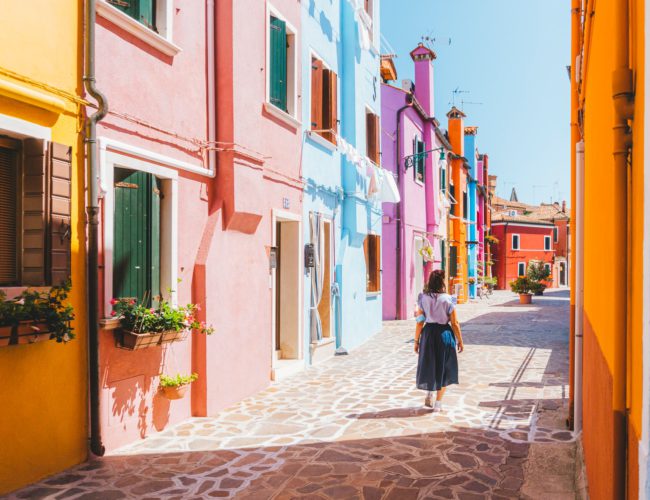
Treviso
Venice has built such a reputation for travellers all across the world that it is hard to find the city sans tourists. Treviso comes as a welcome respite if you wish to escape the hustle and bustle of Venice for a while without compromising on the artistic and historical richness. This medieval town is charming, with numerous canals and Renaissance buildings that make it Venice’s sibling-in-arms. Many even call it “mini-Venice”!
You can walk around Treviso admiring the charming Renaissance buildings and frescoed churches, such as the 14th-century Santa Caterina church, made possible by the convenient pedestrian streets and ample space to cycle around without any pressure to rush. The local markets are remarkable, more for the happy chatter of the sellers than the impressive range of local produce that they display.
If you are downtown-hopping and famished, indulge in some local “chiodini” mushrooms, red lettuce, “ubriaco”, or some “sopressa” salami.
Location: Province of Treviso 31100 Italy
Getting there: By train from Stazione Santa Lucia to Treviso Centrale.
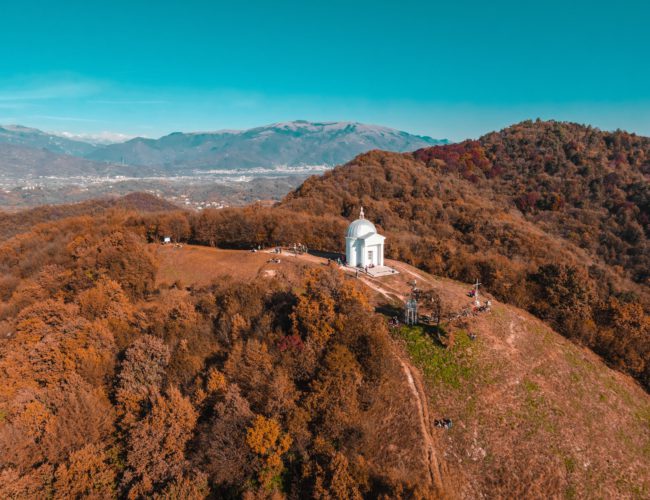
The Euganean Hills
Overcome by emotion at the sight before his eyes, Shelley penned ‘Lines Written Among the Euganean Hills’. Many centuries later, the Euganean Hills continue to evoke similar emotions in anyone who has witnessed it or found the chance to spend some time here. These hills have been the destination for volcanic hot springs since Roman times. You will realise how special this place is if you want to de-stress and have a truly satisfying escape from Venice’s busy streets.
Treat yourself to some alone time and relaxing solitude in these hills known for excellent spas, massages, and mud therapies while soaking in the beautiful view of the hills. Take long walks in the bucolic localities, visit Montegrotto’s Roman archaeology, or the Butterfly Arc and Fairy Wood which are a treat for children. If you love poetry, you cannot miss a visit to Casa di Petrarca, the house where the great Renaissance poet, Petrarch lived.
Location: 35030 Vo, Province of Padua, Italy
Getting there: You can reach Montegrotto by train from Stazione Santa Lucia, or by car from Venice (45 minutes ride).
Padua
Padova or Padua, the oldest city in northern Italy, is the hub for art lovers and history buffs alike, because of Roman archaeological remains. In the 14th century, Padua was home to some of Italy’s (and the world’s) finest artists – Giotto, Giovanni, Donatello, Paolo Uccello, and others, who left behind a rich legacy with their important artworks their rich legacy. Padua’s reputation as a scholastic city continues to this day, and it is home to the very prestigious University of Padua that includes the world’s first botanical garden and an anatomy theatre.
Besides the grandeur of this city, Padua is a visually thrilling spot for travellers. Walk down the narrow streets to discover local sights and tastes of the nostalgic Old Town. Also check out the Byzantine domes of the St. Anthony shrine, the waterway of Prato della Valle that is lined with statues, the Piazza dei Signori, and Palazzo della Ragione from the Middle ages, and the 18th century Villa Pisani that houses a splendid ballroom.
Location: Province of Padua, Italy
Getting there: By train from Stazione Santa Lucia to Padua (Padova).
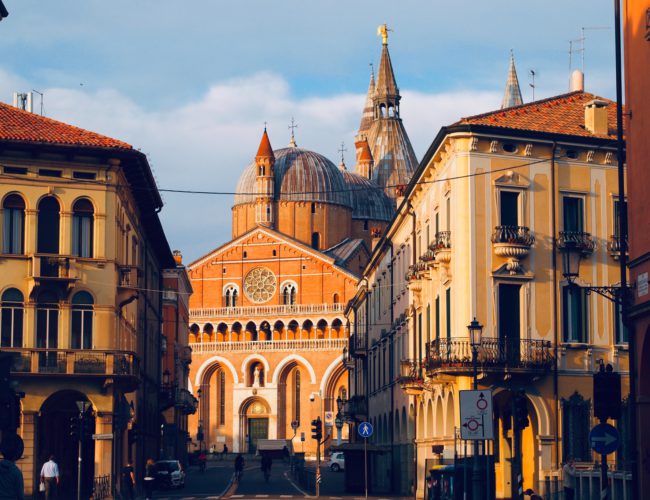
Vicenza
The great Renaissance architect Andrea Palladio (1508–1580) made Vicenza his adopted home and since then has left his mark and influence pretty much everywhere in the city. His work, inspired by classical Roman architecture, is what gives Vicenza its unique look. Palliao’s influence did not stay restricted to his city or Italy alone and has spread throughout England, Europe, and North America as well.
To have a closer look at Palladio’s most prominent architectural achievement, check out Teatro Olimpico, the indoor theatre. The extraordinary thing about this building is that it is built of wood and plaster but is made to look like marble – an obvious Renaissance inheritance. Other important works of Palladio include the Museo Civico and the Loggia del Capitaniato.
Location: Province of Vicenza, 36100, Italy
Getting there: By train from Stazione Santa Lucia to Vicenza.
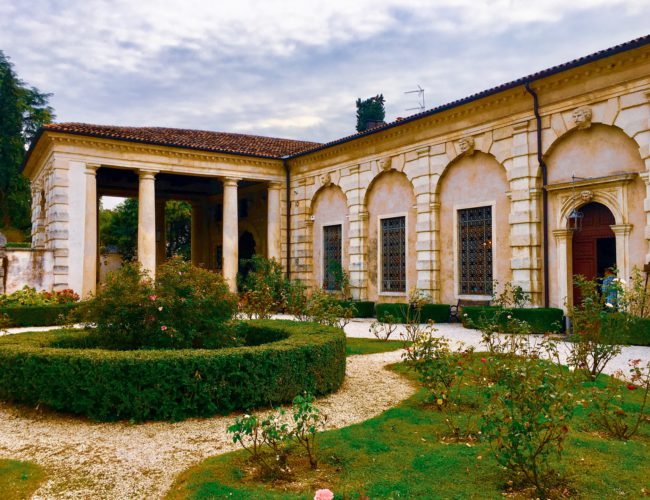
Ferrara
Ferrara, located by the River Po, was another intellectual and artistic centre of the Renaissance era that attracted some of the greatest minds of that time. It was born of an attempt to build an ‘ideal city’ based on the notion of modern town planning and development. Much of the contributions to city planning were made by Biagio Rossetti towards the end of the 15th century.
Ferrara is home to several remarkable monuments such as the castle of the d’Este noble dynasty from the 14th century. The Castello Estense towers stand as a site of the dynasty’s powerful, but often fearsome reign. The Romanesque-gothic Duomo is a must-see, along with the Museo della Cattedrale and the Palazzo dei Diamanti.
If you have had your fill of walking down history’s alleys, Ferrara is the place to fulfill your homemade tortellini dreams that are available in both stores and incomparable restaurants. Local Italian dishes are a real crowd-puller in this lesser-known gem of Italy.
Location: Province of Ferrara, Italy
Getting there: By the regional train from Stazione Santa Lucia to Ferrara hourly.
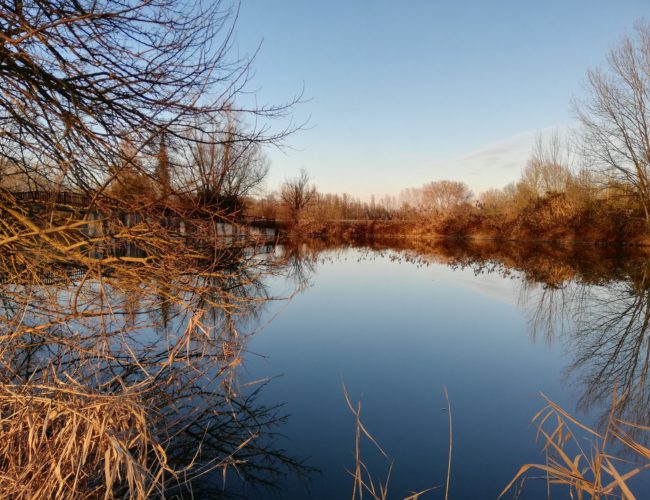
Lido
Lido is an 11km-long sandbar in the lagoon of Venice. It is a break from monuments and churches and will instead take you on a hunt for Art Deco villas. This spot used to be a sought-after haunt even in the 19th and early 20th centuries for well-to-do Europeans, who spent their summers here. Lido began to be filled with holiday homes and villas that boosted its tourism. Today, it is making a comeback as a sustainable tourist destination with a focus on slow travel, good food, sauntering by the lagoon, and taking in all its views.
Location: Lido di Jesolo
Getting there: By car on ferry-boats leaving from Tronchetto, or on foot with public water buses from Piazzale Roma and from Venice Santa Lucia train station. From Marco Polo Airport it is possible to reach the Lido through a convenient and direct service of boats.
